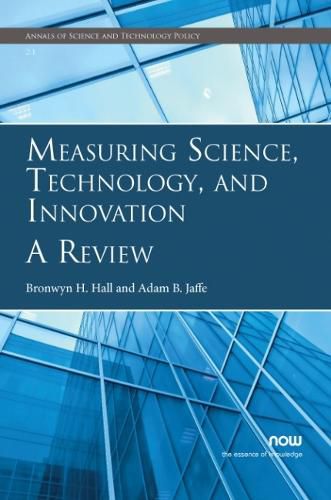Readings Newsletter
Become a Readings Member to make your shopping experience even easier.
Sign in or sign up for free!
You’re not far away from qualifying for FREE standard shipping within Australia
You’ve qualified for FREE standard shipping within Australia
The cart is loading…






This title is printed to order. This book may have been self-published. If so, we cannot guarantee the quality of the content. In the main most books will have gone through the editing process however some may not. We therefore suggest that you be aware of this before ordering this book. If in doubt check either the author or publisher’s details as we are unable to accept any returns unless they are faulty. Please contact us if you have any questions.
The measurement of scientific, technological, and innovative activities (STI) in the economy is an increasing challenge faced by statistical agencies around the world. Measuring Science, Technology, and Innovation: A Review surveys the current state of the art including the concept of indicators, their quality and use, and a schematic model of the STI system that can identify gaps in the set of indicators commonly in use. The authors review the developments in STI measurement that have taken place in the rest of the world, particularly the widespread use of innovation surveys. The monograph concludes with a discussion of the measurement gaps and issues in the U.S., which we identify as innovation (especially in the service sector), non-R&D investment related to innovation, data timeliness, data linkages, measurement related to public policy goals, and the sources of capital for innovation. After an introduction, Section 2 summarizes the framework for analysis of the STI system that is most widely used by economists. Section 3 considers how the specific data currently collected by the U.S. government, and indicators constructed from those data, relate to the important concepts within the framework. Section 4 expands this discussion by reviewing data collected and indicators published by other countries and international organizations. Section 5 then turns to the issues of policy, and draws explicit connections between important policy questions and indicators, using the framework of Section 2. Section 6 builds on these discussions to highlight gaps and issues with the existing indicators, and Section 7 provides concluding comments.
$9.00 standard shipping within Australia
FREE standard shipping within Australia for orders over $100.00
Express & International shipping calculated at checkout
This title is printed to order. This book may have been self-published. If so, we cannot guarantee the quality of the content. In the main most books will have gone through the editing process however some may not. We therefore suggest that you be aware of this before ordering this book. If in doubt check either the author or publisher’s details as we are unable to accept any returns unless they are faulty. Please contact us if you have any questions.
The measurement of scientific, technological, and innovative activities (STI) in the economy is an increasing challenge faced by statistical agencies around the world. Measuring Science, Technology, and Innovation: A Review surveys the current state of the art including the concept of indicators, their quality and use, and a schematic model of the STI system that can identify gaps in the set of indicators commonly in use. The authors review the developments in STI measurement that have taken place in the rest of the world, particularly the widespread use of innovation surveys. The monograph concludes with a discussion of the measurement gaps and issues in the U.S., which we identify as innovation (especially in the service sector), non-R&D investment related to innovation, data timeliness, data linkages, measurement related to public policy goals, and the sources of capital for innovation. After an introduction, Section 2 summarizes the framework for analysis of the STI system that is most widely used by economists. Section 3 considers how the specific data currently collected by the U.S. government, and indicators constructed from those data, relate to the important concepts within the framework. Section 4 expands this discussion by reviewing data collected and indicators published by other countries and international organizations. Section 5 then turns to the issues of policy, and draws explicit connections between important policy questions and indicators, using the framework of Section 2. Section 6 builds on these discussions to highlight gaps and issues with the existing indicators, and Section 7 provides concluding comments.